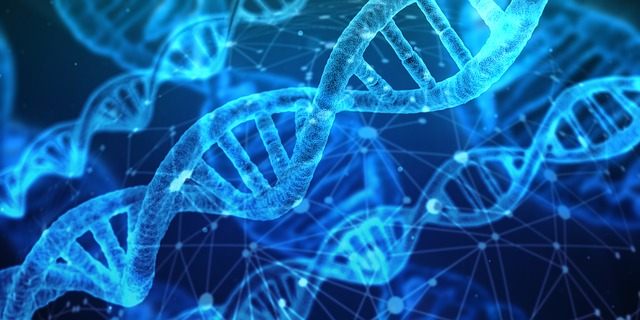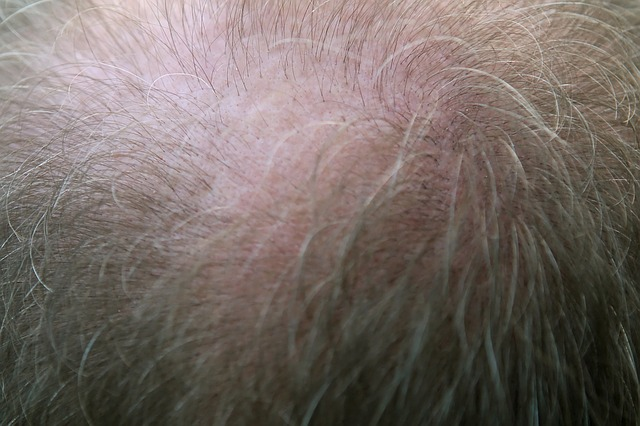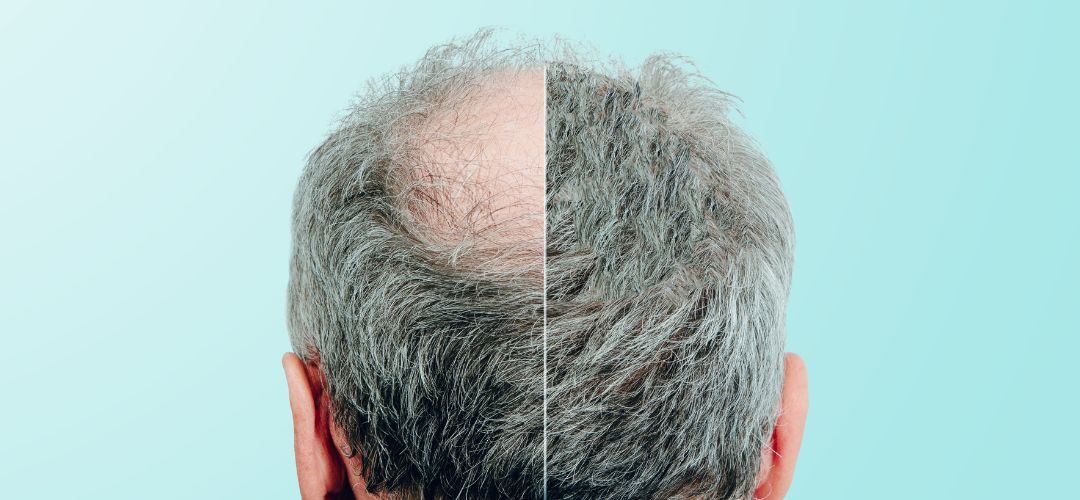Whether you’ve noticed your bald patch growing in size or an increased amount of hair shedding when brushing, any form of hair loss can be disheartening.
With 42% of men experiencing moderate to extensive hair loss in their lifetime, it’s important to understand what type of hair loss you’re dealing with, to determine if it’s possible to regrow hair after balding.
Let’s start with the good news
For those facing temporary hair loss, there are a number of effective treatment options available, which work to not only slow the rate of shedding, but also to promote regrowth of new hair in sparse areas and bald spots.
If your hair loss is caused by a genetic condition or compromised immune system, unfortunately it may not be reversible. Although, while it may not be entirely reversible, there are still treatments available to slow the progression of a hair loss condition and nourish the remaining follicles.
What causes hair loss?
As with many medical conditions, there are a number of reasons why people lose their hair. Hereditary factors, low testosterone, lifestyle habits and pre-existing medical disorders are just a few of the culprits that have been known to cause both temporary and permanent hair loss.
Genetics
Genetics is one of the highest contributing factors when determining a predisposition to hair loss. While baldness is most commonly associated with men, hair loss can affect anyone, of any age – regardless of their gender.

Is there a way to fight “the baldness gene”?
Firstly, let’s start by pointing out the fact that your genetics are complex. The result of the complexity behind genetic structure means that you won’t necessarily start losing your hair just because your grandad has a receding hairline.
As with any health condition, there is a great deal of myth and speculation surrounding who to blame for your genetic hair loss. Previously, it was thought that male pattern hair loss was passed down to a son from his mother’s father. Researched published by NIH, however, revealed that more than 63 genes play a part in the development of male pattern baldness, only 6 of which are found on the X chromosome, passed down by the mother.
While it may be disheartening to discover that hair loss caused by genetics is permanent, there are a number of treatment options that work to slow the effects of hereditary hair loss and boost the appearance of your remaining hair follicles.
Stress
If your hair falls out easily when brushing or washing, stress or anxiety may be the cause of your lost hair. Telogen effluvium is the most common condition associated with thinning hair due to stress.
This type of hair loss is likely to result from a traumatic experience, which disrupts the lifecycle of a hair follicle, sending your scalp into a premature shedding phase, where more hair falls out comparatively.

Unlike genetic conditions, stress-related hair loss is often reversible. Once your hair regrows, you should experience the same fullness and appearance you had prior to your stress induced experience.
Insomnia
Getting a good night’s sleep has never been more important, particularly when we consider that most sleep disorders have the potential to cause significant hair loss.
Affecting more than 35% of adults, insomnia disrupts the human growth hormone, which can lead to lower testosterone levels and, ultimately, hair thinning and bald spots.
Insomnia also has the potential to wreak havoc on other aspects of your health, both physical and mental. As with stress related hair loss, however, new hair growth can occur when the diagnosis of insomnia is effectively managed.
After treating your insomnia, you should notice a vast improvement, as the hair grows back and is restored to its regular thickness and volume.
Underlying health conditions & medications
Some pre-existing health conditions can contribute to an increased rate of hair loss or may even affect the healthiness and appearance of existing hair. Nutritional imbalances, including zinc or iron deficiency, and serious health impediments, such as autoimmune disease, may also increase the likelihood of hair loss.
One form of hair loss, known as alopecia areata, occurs when the body’s immune system attacks hair follicles, resulting in rapid hair loss. Alopecia areata can be brought on by severe stress and is most commonly associated with serious underlying health conditions, such as thyroid disease, dermatitis, down syndrome, asthma and vitiligo.
Certain strong medications can also result in hair thinning or baldness. Powerful treatments, such as chemotherapy, are used to attack rapidly growing cancer cells and other harmful cells within the body. An unavoidable side effect from many of these treatments is that they commonly attack other rapidly growing, healthy cells, within the body, including those found in the roots of your hair.
Other medications that cause hair loss include those used to treat high blood pressure, arthritis, and mental health conditions.
Hormone imbalance
Just as insomnia can affect hormones and lower testosterone, so too can a multitude of other lifestyle factors. Our hair grows most noticeably when our body is nourished and the human growth hormone is functioning at its optimal level.
Most hormonal changes occur naturally as the body ages and this is why we see male pattern hair loss more frequently in older men. There are certain things in life that can create a hormone imbalance nonrelated to ageing, such as poor nutrition, injuries, illnesses and lack of exercise.
Does going bald mean hair won’t grow back?
Hair regrowth is highly dependent on your individual circumstances and the type of hair loss with which you have been afflicted. While most hair loss appears in hair thinning and receding hairlines or hair falling out gradually, how much hair you should expect to lose will depend on which type of hair loss you are facing.
Types of hair loss
Male pattern baldness
Male pattern hair loss, commonly referred to as androgenetic alopecia, is one of the most common types of hair loss, often seen in older generations of men. This genetic, hereditary condition often causes a distinctive hair loss pattern, such as a receding hairline.

Alopecia areata
As opposed to genetic hair loss conditions, alopecia areata is an autoimmune disease that can affect men of any age. While there is no direct hereditary link associated with this disorder, people with extensive vitamin D deficiency, previous history with other compromising medical conditions or a close blood relative with alopecia areata are all at a higher risk of developing the condition.
Telogen effluvium
While rapid hair loss can be a frightening discovery, there is light at the end of the tunnel if the cause of hair thinning is related to telogen effluvium. This temporary form of hair loss is often triggered by a traumatic event or stressful incident. When the stressor in your life has subsided, new hair will begin to replenish the areas of thinning, and growth is likely to return to its normal state.
Drug-induced alopecia
Unlike many other forms of hair loss, drug-induced alopecia (such as that seen in chemotherapy treatments) will often cause a person to go completely bald, losing all hair across the entire surface of the body. While this is a distressing experience, hair growth should return to normal after the treatment is completed.
Lifecycle of a hair follicle
The growth cycle of hair happens over four distinct phases – anagen, catagen, telogen and exogen.
The anagen phase is where we see the follicles develop into growing hair, visibly noticeable on the surface of the scalp. With a lifespan of up to 7 years, approximately 90% of all hairs on your head are in this initial growth phase, at any given time.
Catagen, the next phase, occurs over a much shorter timeframe, lasting only 10 days, as the follicles shrink and hair grows more slowly.
The following telogen phase, also known as the resting phase, has a name that truly speaks for itself. At this point in the cycle, the hair neither falls out nor grows, for approximately 3 months.
When the phase of rest is complete, exogen begins, as hair falls out after detaching from the follicle, thus completing the cycle. When the cycle is complete, the body simply begins the next growth phase and the process continues repeating.
How to promote hair regrowth
Although it can be a real bummer to experience hair loss, there are a number of methods you can implement into your daily life to promote healthy new hair growth.
Dietary improvements and natural supplements
Vitamin C, vitamin D, iron, biotin and zinc all work to promote healthy hair.
There are a number of different ways to ensure you’re getting the vitamins and minerals you need, including consultations with a doctor or dietician, setting realistic health goals and adopting nutritional meal planning solutions (such as counting macros to increase your protein intake and boost iron levels).
In combination with a balanced diet, natural supplements also offer a healthy alterative to provide your body with any vitamins and minerals it may be lacking.
Sleep
Taking it back to our discussion of insomnia leading to hair loss, let’s take a moment to reiterate just how important sleep is to hair growth and overall wellbeing.
When we engage in healthy sleep habits, such as no caffeine in the evening, creating comfortable surroundings and adhering to a consistent bedtime, our bodies become more receptive to not only falling asleep, but staying asleep too.
A hormone called melatonin is responsible for regulating our sleep cycles. When we take measures to ensure our body is receptive to state of rest, more melatonin is produced, in order to nurture our sleep cycle. Melatonin has also been shown to increase hair growth, making it a key ingredient in keeping that full head of hair.
Avoid harsh chemicals
When it comes to styling, it’s important to understand that our hair follicles absorb the chemicals and ingredients in the hair products we use. Limiting your use of harsh chemicals will promote healthy hair, while natural products also offer a great alternative.
Alongside avoiding chemicals, you should also be aware that your method of styling may be causing excess hair shedding. When applying products, be sure not to pull hair too tightly, as this may damage the hair shaft.
If you have long hair and have noticed any thinning, this can be caused by tight hairstyles, such as buns or ponytails that place extra strain on hair follicles, leading to breakage and hair shedding.
Reduce stress and anxiety
Severe stress can lead to a hindered growth cycle of follicles, resulting in thinning hair and other forms temporary hair loss.
There are a number of stress relieving techniques that can be implemented into your daily routine, which will also assist in promoting better lifestyle and sleep habits. Exercise, meditation, reading, socialising with friends or family, listening to music and engaging in regular sex are all activities that may help you to reduce stress and anxiety in life.
Scalp massage
The rejuvenating properties of massage offer countless health benefits, for both physical and mental wellbeing. Although research is limited, some scientific evidence shows that scalp massages can stimulate hair growth by nourishing and stretching the cells of hair follicles to produce thicker hair.
The process of massage dilates blood vessels beneath the skin, which also promotes healthier hair production.
Scalp massages can easily be performed at home, using your fingertips to stimulate hair follicles, or be carried out by a trained massage therapist. Although a scalp massage won’t cure baldness, it will promote hair growth, while feeling great at the same time.
Treatment options for hair loss
As a condition that affects nearly 50% of men, it’s safe to say that a variety of effective hair loss treatment options have been developed over the years. Depending on the severity and type of hair loss, your problems could be addressed by a simple topical spray or oral medication.
Complex treatment options are available, including light therapy, hair transplant, hair extensions, clinical trials and surgeries, however most medical professionals recommend trying a less invasive hair loss treatment before heading straight to these procedures.
Non-surgical hair loss treatment
Male pattern baldness, also known as androgenetic alopecia, can often be improved using a combination of prescription medication and topical Minoxidil 5%. This course of treatment has shown to be effective in helping men to maintain their existing hair, prevent further loss and, in some cases, regrow hair in balding areas.
Although prescription medication for hair loss is considered to be safe and effective, as with any medication there is the possibility that you may experience some mild adverse reactions, including low libido and changes in mood. Always consult with your doctor for advice if you experience any side effects from your treatment.
Let’s get your health sorted!
If you’re ready to take the first step in boosting hair health, start a convo with a Stagger doctor to discover personalised treatment options.
Sources
American Academy of Dermatology Association. (2022) Hair loss types: Alopecia areata causes. (https://www.aad.org/public/diseases/hair-loss/types/alopecia/causes)
Healthline. (2019) Can a scalp massage help your hair grow? (https://www.healthline.com/health/scalp-massage-for-hair-growth)
NIH National Cancer Institute. (2020) Hair Loss (Alopecia) and Cancer Treatment. (https://www.cancer.gov/about-cancer/treatment/side-effects/hair-loss)
NIH National Library of Medicine. (2017) Genetic prediction of male-pattern baldness. (https://www.ncbi.nlm.nih.gov/pmc/articles/PMC5308812/)
